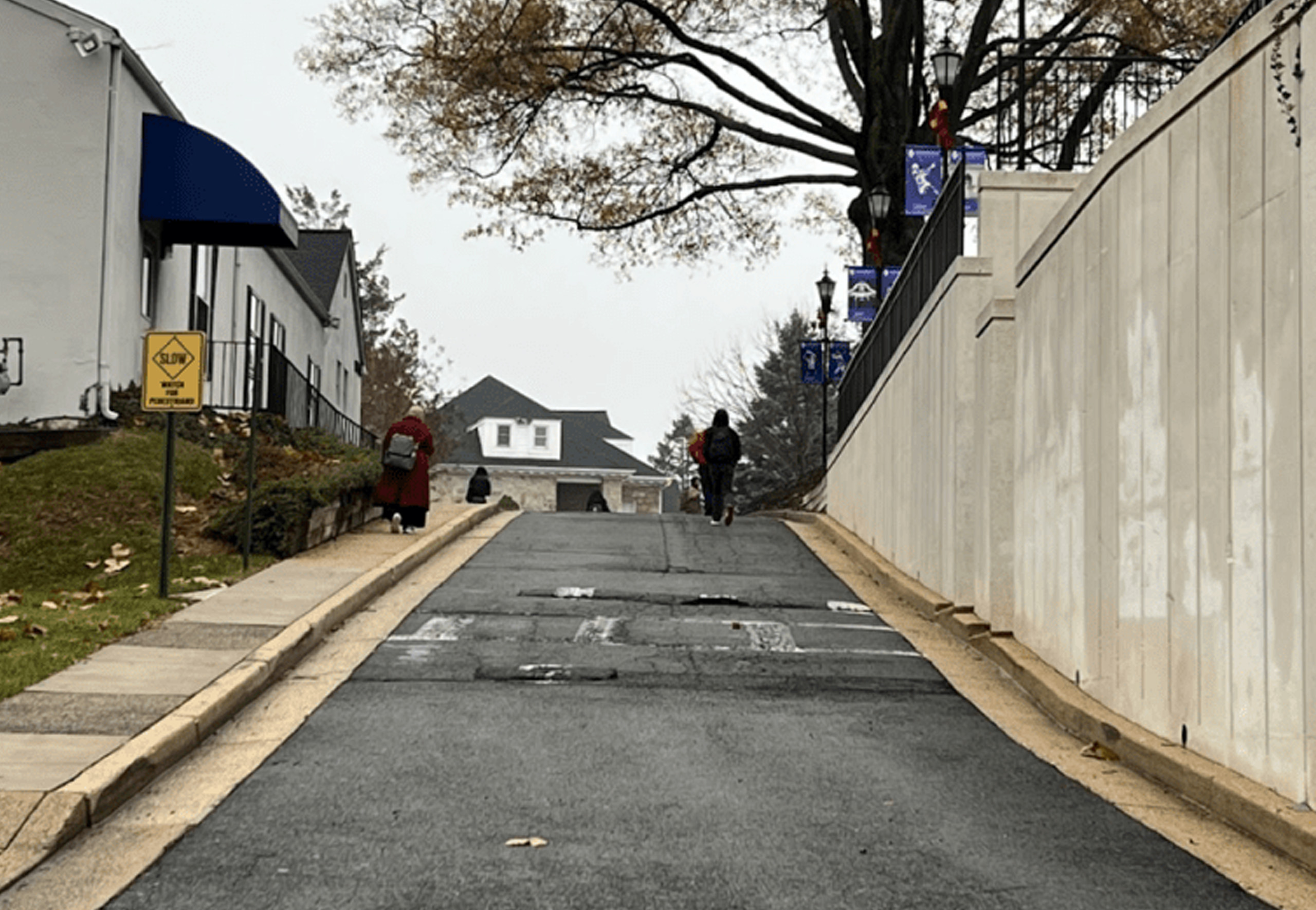Accessibility on campus is a challenge for some students

Written by Sophia Hernandez-Pina
Photography by Sophia Hernandez-Pina
Example one: One of the many hills on campus that are steep and uneven. This hill leads down to Rowley Hall, where many classes are held, all other access points are via long and difficult to walk staircases. (Pictured above)
Marymount University voices their stance of student diversity, with students from all around the world of different backgrounds. But people with physical disabilities said they encounter difficulty at Marymount due to the school’s scarcity of accessibility under the ADA, Americans with Disabilities. This Act prohibits the discrimination against people with disabilities, this includes; employment, transportation, public accommodations, communications, and access to state and local government programs and services. Sven Jones, the school’s head of ADA compliance, said students who contact the school via the accessibility hub on the school’s website receive options or accommodations to be able to move around campus more efficiently, with assistance getting to classes given advance notice.
Example two: Interior Design student Lais Mendes has pre-existing problems with her legs, and the terrain on campus makes the injuries worse. (Pictured below)

While people with disabilities make up just 4% of the overall student body, the absence of ADA compliance affects students and teachers alike, who say the school’s hills and lack of ramps and easy accessibility affects mobility and overall functioning on campus. Lais Mendes, an interior design student who had previous injuries before coming to Marymount, said her lack of mobility in her hip and knees means she does not handle the hills well, and the rough terrain exacerbates the old injuries. Sydney DeRousi, a freshman soccer player, did not know about the chance to request assistance through the school’s hub. DeRousi, who sustained a leg injury playing soccer, said if given the opportunity to speak to the head of the ADA compliance department, she would ask for more ramps. Because of the campus’ many staircases, ramps would make it easier for students with disabilities and injuries to move around and access their classes, she said. Although the campus is on an uneven plot, the department wants to make the campus more accessible for students of all backgrounds, able and disabled, says Jones. He explained that if a student were to go to the main Marymount website, and search student access services, their contact information will be at the bottom of the page. There you can find the email to contact the access department and they can help students figure out a plan to help accommodate them on campus.

Example three: Marymount’s on campus soccer field. The only way to access this field is through a steep and small staircase, no ramps, and the hill leading down to the field is very steep and dangerous to walk on. (Pictured above)

Example four: These stairs were recently put in next to the gym. Instead of using the money to build a ramp since there already was another staircase leading to this area, they built a new staircase. (Pictured above)
 The Banner
The Banner